Saltwater – tropical
{{start}}
{{end}}
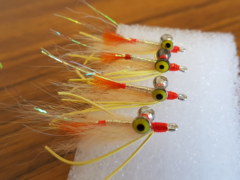
{{+1}}Rubber legged gotcha – Etu inspired{{-1}}
{{start}}
The story line was that the bonefish had refused every fly they had offered the day before so for the next days outing Etu tied this fly on the beach and then they walked straight into the water and immediately hooked a fish ... gee it must be a good fly. Anyway I do like it because Aitutaki bonefish do seem to like flies that incorporate a yellow component.{{end}}
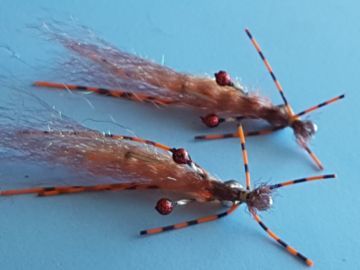
{{+1}}Tidal flats shrimp – orange and brown{{-1}}
{{start}}
This orange and brown size #2 hook version of my tidal flats shrimp is my first choice of fly when targeting feeding trigger fish. It stands out in the storm of mud and other debris that trigger fish stir up as they forage around for food.{{end}}
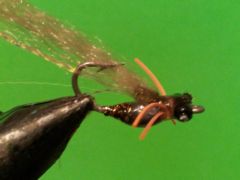
{{+1}}Bonefish shrimp{{-1}}
{{start}}
Bonefish are an amphidromous species which means they migrate from fresh to salt water or from salt to fresh water at some stage of the life cycle other than the breeding period. They live in inshore tropical waters and moves onto shallow mudflats and sand flats to feed with the incoming tide. Adults and juveniles may shoal together, and they may be found singly or in pairs.{{end}}
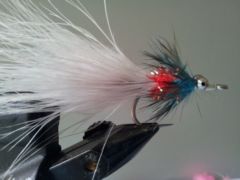
{{+1}}Gusto{{-1}}
{{start}}
This is a Peter Morse fly and a great variation on a Wooly Bugger that is making its mark in fresh water fly fishing. It's dressed on a wide gape hook that creates an effective "keel" effect and sports a relatively long marabou tail and a dense collar which together create plenty of currents around the fly that really get the marabou moving. It is adaptable for a range of species and situations.{{end}}
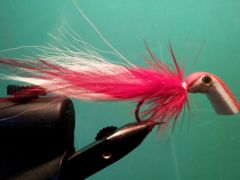
{{+1}}Chatto’s Mangrove fly{{-1}}
{{start}}
I like to fish it on either a floating line or an intermediate line with the depth of water just outside the target area being the determining factor. Fishes best if cast deep into the target area and just let it sit for up to 10 seconds. After that wiggly your rod tip so that the fly just shudders in the water activating the rattle. You can then retrieve the fly using a medium stripping action punctuated with plenty of stops and even let the fly float back to the surface and rattle the rod tip again.{{end}}
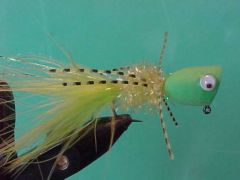
{{+1}}Popper – bass foam head{{-1}}
{{start}}
The fist and most obvious is when they are actively feeding. At those times bass can have an appetite for everything from nymphs, yabbies, small fish, shrimp, worms, lizards, frogs, grasshoppers, cicadas, beetles and for that matter almost anything that will fit in their mouth it's not surprising that a popper dropped in their line of sight and looking like something alive often gets their attention. Bass are binge feeders and are by no way picky when it comes to feeding time.{{end}}
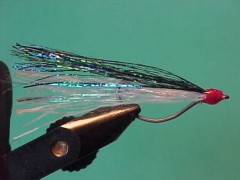
{{+1}}Bendback{{-1}}
{{start}}
The bendback is very effective fly in locations that contain a lot of structural hazards such as oyster racks, mangroves, tree stumps and rock bars. The design of the fly reduces the propensity of the fly to snag. Choose the colours of your materials so that your version mimics local bait fish.{{end}}
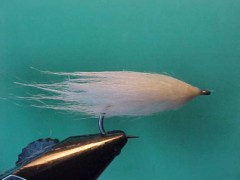
{{+1}}Bread fly – wet{{-1}}
{{start}}
All sorts of estuary fish respond to bread berley and will take a sinking bread fly suspended or slowly sinking through the feeding zone.{{end}}















